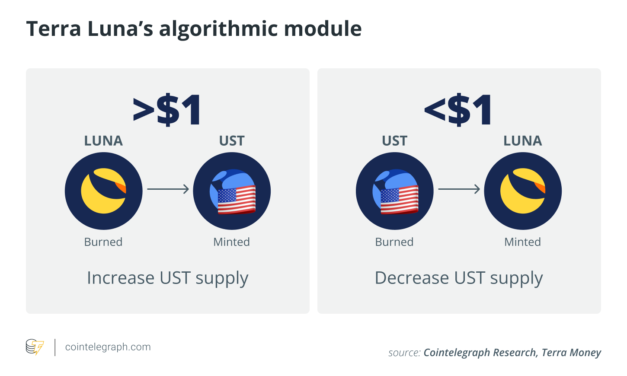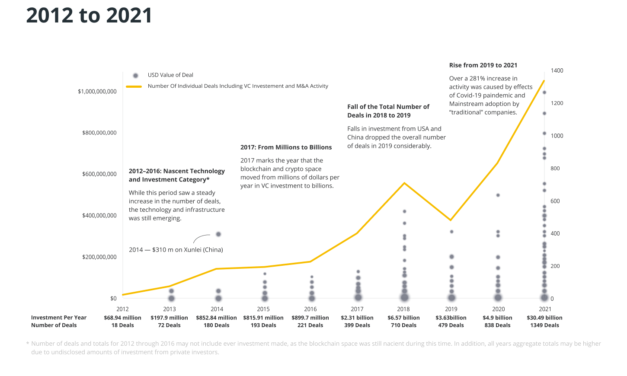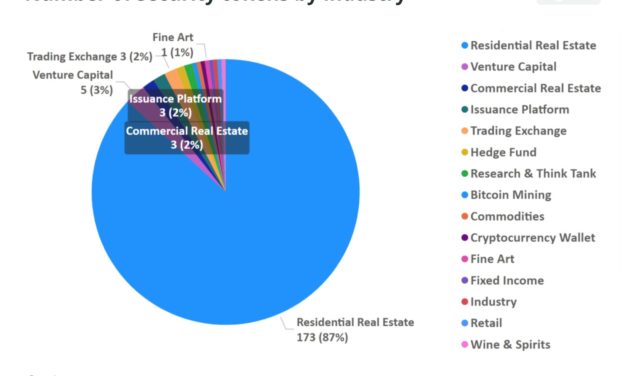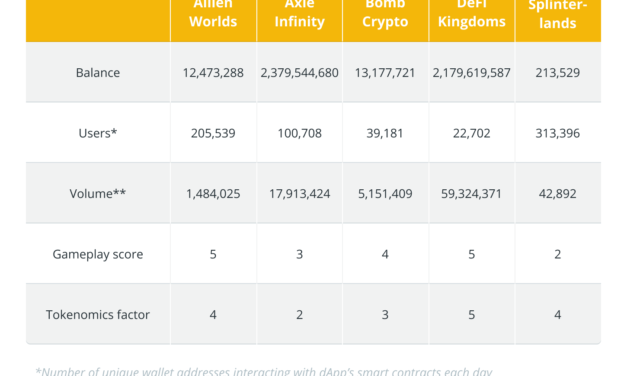Can Terra blockchain sustain its growth? Research report digs deeper
Cointelegraph Research fundamentally evaluates Terra in its 50-page report to provide an in-depth analysis of its recent updates, including Columbus-5, the Bitcoin (BTC) acquisition and others.Decentralized algorithmic stablecoins, blockchain integration in real-world payments and 20% APYs on decentralized finance (DeFi) protocols — what is all of this, and is it really doing this? The team of experienced crypto analysts from the Big Four and the best universities worldwide dives deep into the blockchain’s ecosystem, community and underlying technology, assessing the potential regulatory, market and technological risks.Terra is a proof-of-stake blockchain ecosystem that aims to introduce cryptocurrencies as a means of payment to a broad audience. The team has successfully integrated the dual token model, where the minting and burning of the LUNA token control the supply and price of Terra’s stablecoins, including Terra USD (UST), TerraGBP, TerraKRW, TerraEUR and the International Monetary Fund’s TerraSDR.Moreover, the fluctuations in mining rewards are minimized through transaction fees and LUNA’s burn rate variations. Notably, the rewards are programmed to increase as the blockchain’s ecosystem grows.Simultaneously, multiple developers are working on innovative decentralized applications (DApp) on top of the Terra blockchain, including Mars Protocol, Anchor and Chai. Numerous companies, such as Kado, have established the payment infrastructure. There are some nonfungible token (NFT) market participants, too, where Levana, Talis and Knowhere are aiming to create a thriving ecosystem. Simultaneously, TFM, a DeFi and NFT aggregator on Terra, aims to unite the whole Terra ecosystem and become the ultimate go-to place for newcomers.Read the full report on Terra to find out how the blockchain network has developed over the past year.However, the questions rarely raised by the crypto influencers are the decentralization and regulation issues. Will Terra sustain rapid development with only 130 validators? What would happen if UST, the most abundant Terra stablecoin, was subject to the United States Securities and Exchange Commission’s regulatory measures? Finally, if one of the most popular DApps, the Anchor lending protocol, had crashed at the end of January 2022, how would the continuing development of Terra have been perceived?
Čítaj viac






